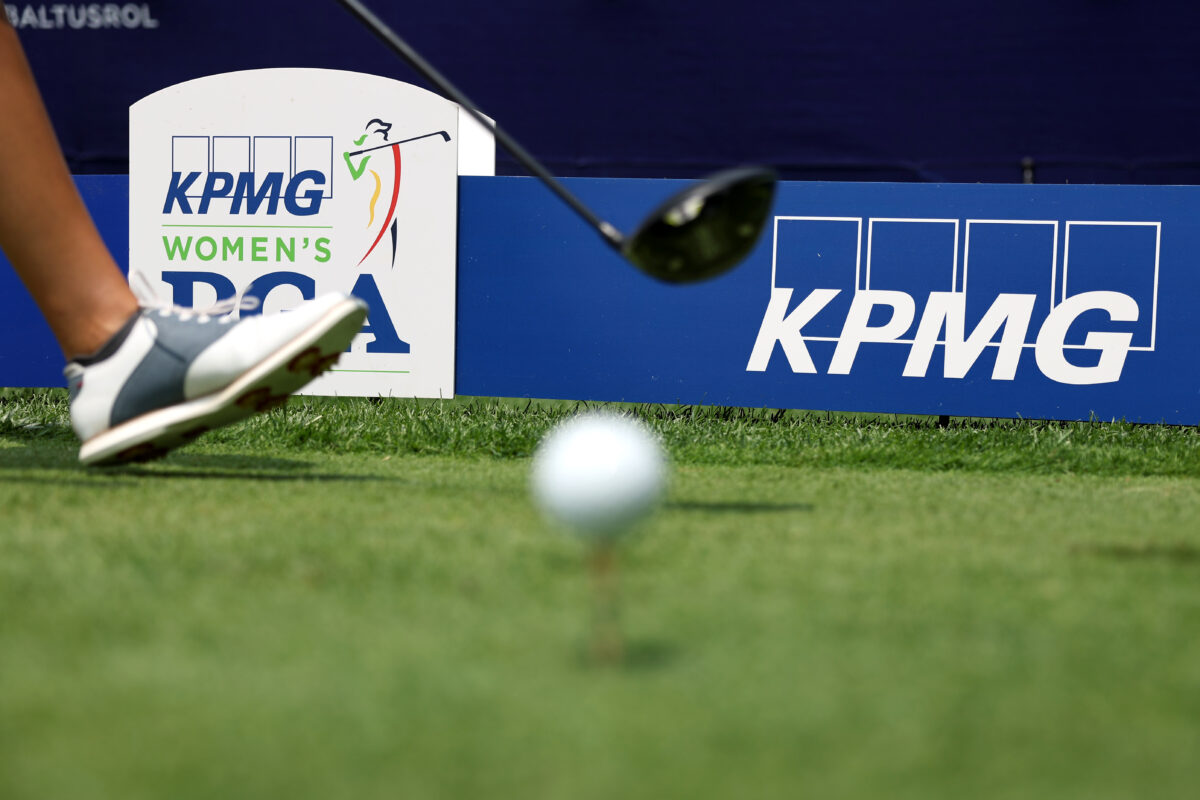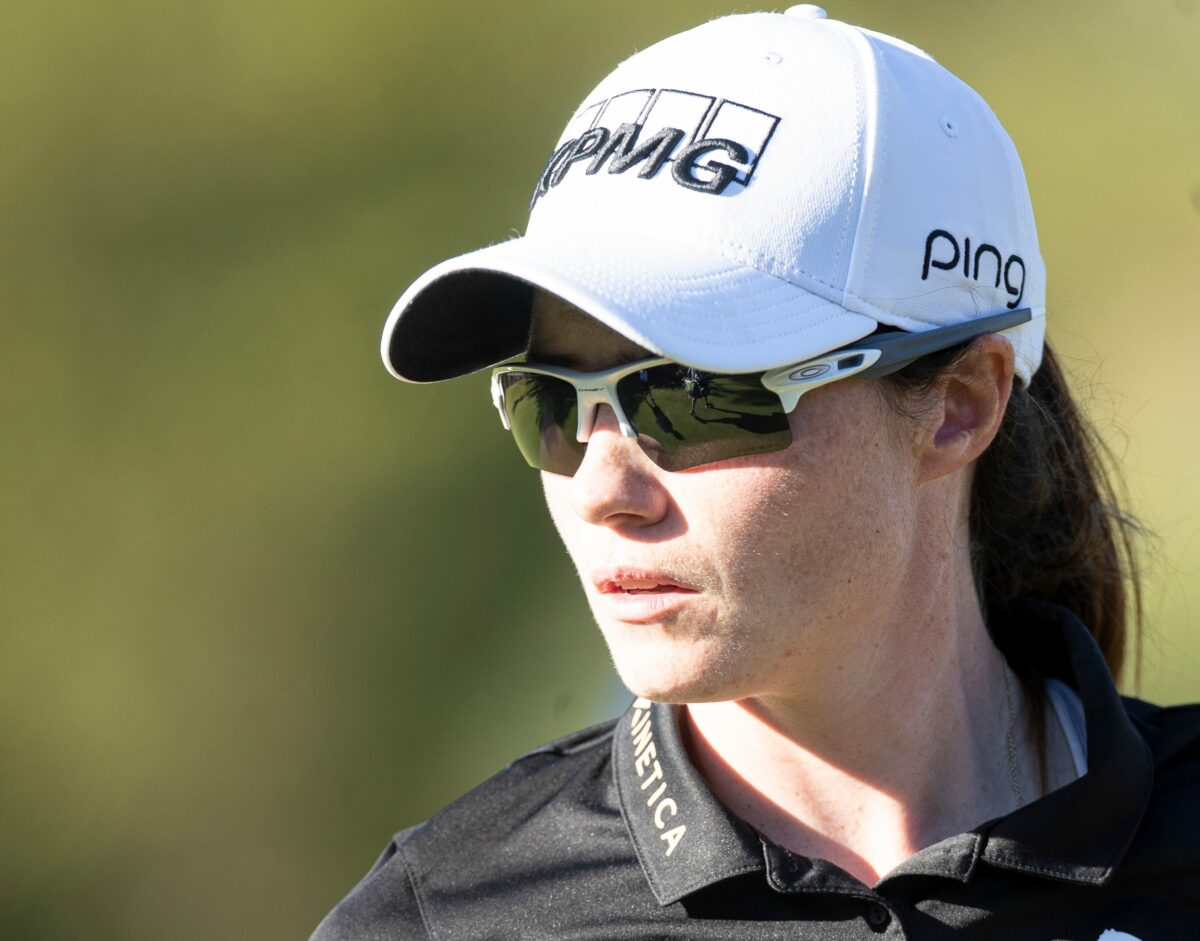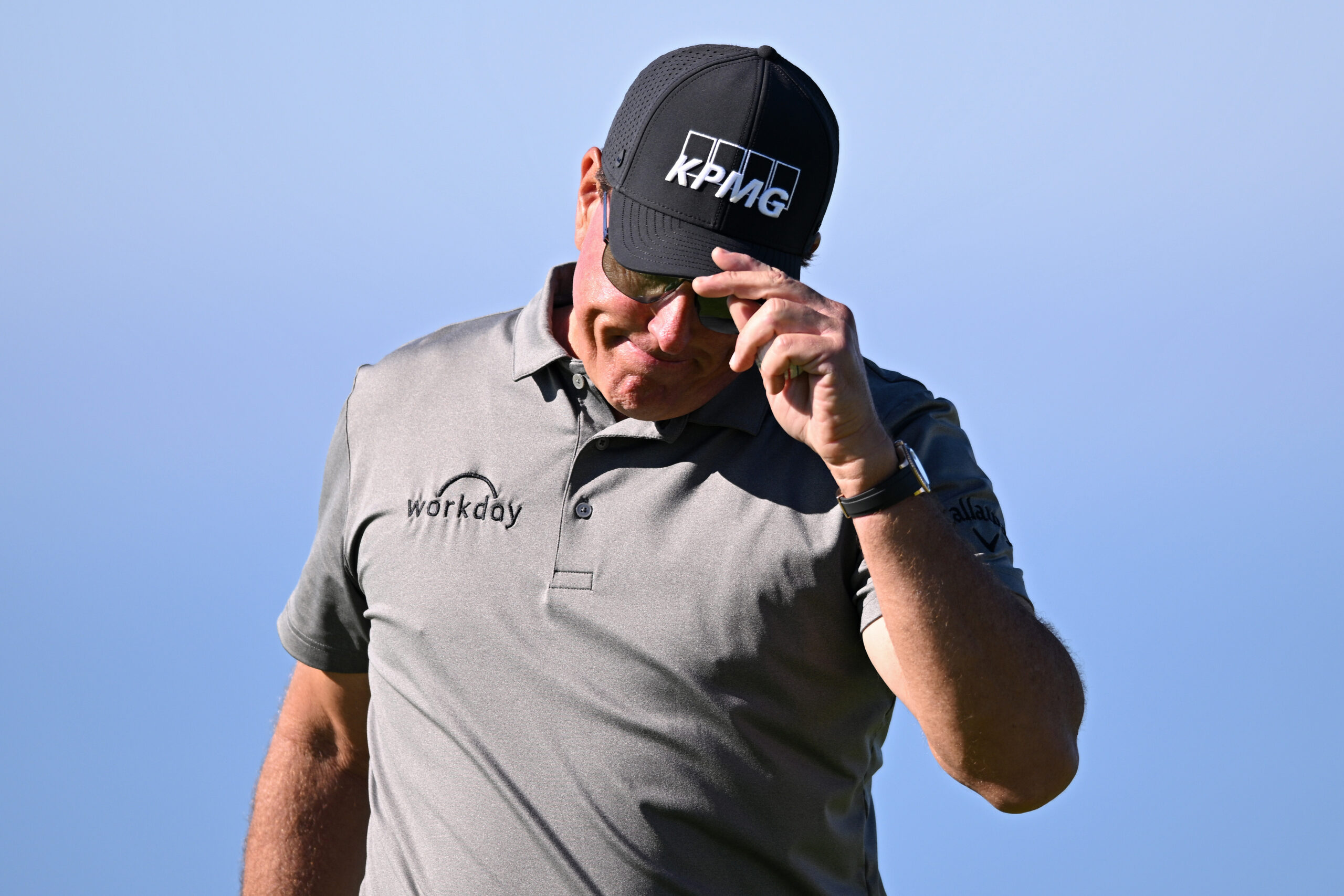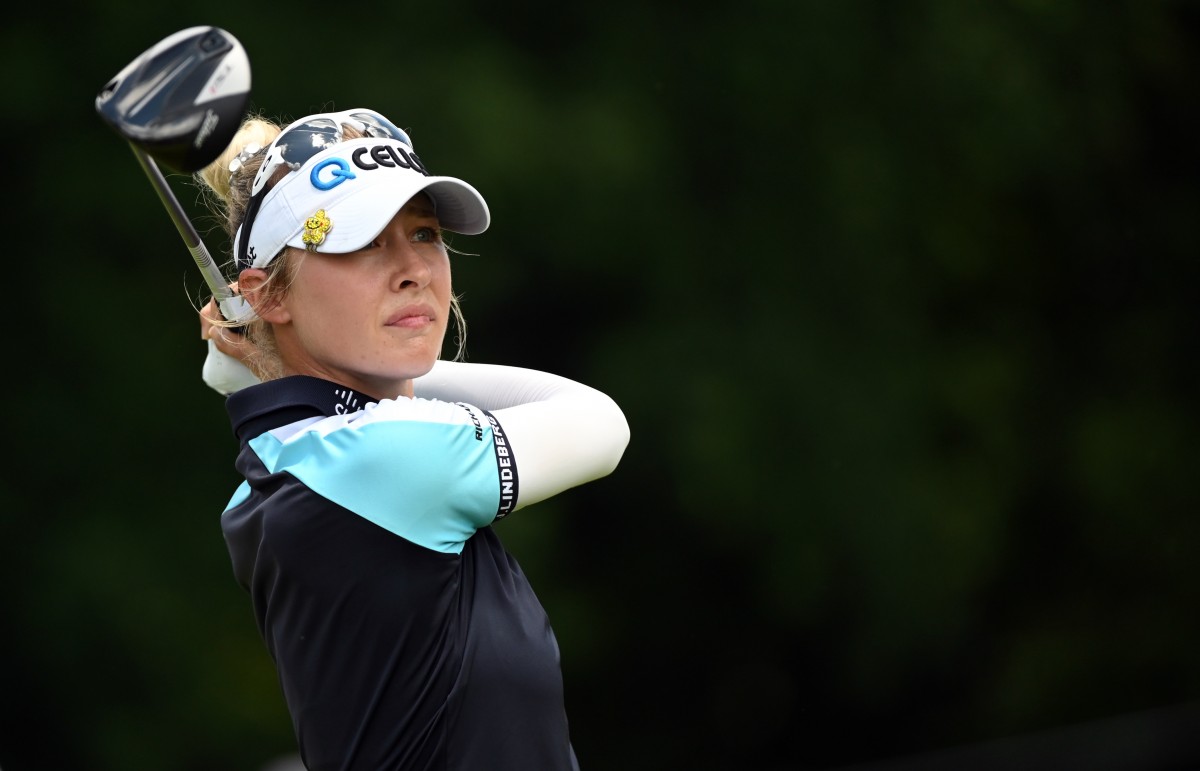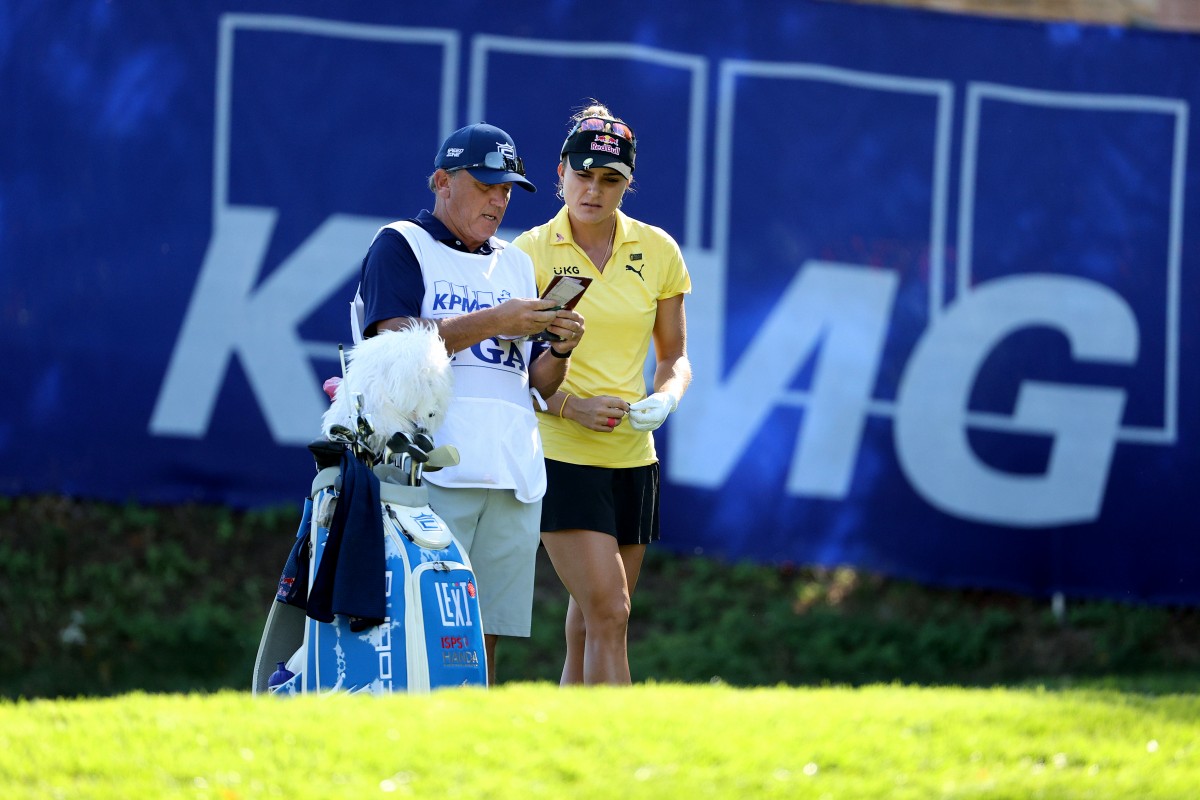[connatix div_id=”3f8b015acdd24c648befc5d5dac47469″ player_id=”b5b22055-8c69-4186-8375-d8426b37ec56″ cid=”7cbcea0d-4ce2-4c75-9a8d-fbe02a192c24″]
SPRINGFIELD, N.J. — Allyson Felix, the most decorated U.S. track and field athlete in history with 11 Olympic medals, went to a dark place after losing to Jamaica’s Veronica Campbell by 0.08 seconds in the 200 meters sprint at the 2008 Summer Games.
“I think it was hard for other people to understand,” said Felix, “because they look at a silver medal and it’s like, that’s amazing, and it is, and I was really grateful, but I think when you’ve dedicated yourself for so long … it was really devastating for me.”
Felix didn’t have the tools then she does now to pull herself out quickly from what she calls an embarrassing time. She’d waited four years to finish second … again.
“To be the favorite, and to want to make your country proud,” said Felix, “and you feel like you just want to disappear when you miss the mark.”
Remarkably, mountaintops can lead players to a similar place. 2022 KPMG Women’s PGA champion In Gee Chun sought help for depression after winning two majors early in her career. The pressure to be perfect took its toll. Chun has talked publicly about her battle for several years now, hoping she can help others.
“It’s not just me,” said Chun. “Everyone has their own hard time.”
Felix came to Baltusrol Golf Club on Wednesday to accept the KPMG Inspire Greatness Award and serve as the closing keynote speaker at the event’s Leadership Summit. The subject of mental health transcends from the boardroom to the locker room as female CEOs and athletes alike have experienced increased anxiety and stress in this post-pandemic era.
https://www.instagram.com/reel/CtxJtLLAQ7x/?utm_source=ig_web_copy_link&igshid=MzRlODBiNWFlZA==
KPMG began regularly surveying its 40,000 U.S. employees in the wake of COVID-19 and heard back from roughly 25,000 on a variety of “How are you feeling?” questions. Laura Newinski, KPMG U.S. Deputy Chair and COO, said employees were coming to their managers for help on issues that weren’t related to work: stress about children and spouses or aging parents.
“We think that during the pandemic,” said Newinski, “people really turned to their employer as a trusted source of information … what’s the new rule set? They’re turning to employers now around a whole range of mental health challenges, not just work.”
KPMG conducted a survey of 1,500 executive women (SVP level and above) from Fortune 1,000 companies across the country on the rise on the rise in post-pandemic stress.
Ninety-one percent of women surveyed perceived an exponential surge of stress in the workplace compared with three years ago. Seventy percent of women attributed higher stress in the workplace to increased workloads and expectations, and 58 percent of executive women report added responsibilities stemming from the need to help manage their teams’ mental health on top of their own.
It’s no surprise then that 71 percent of executive women say organizations need to do more for leaders who are supporting their employees’ mental health and well-being.
Newinski said KPMG has worked to provide quicker access to pre-diagnosis counseling sessions as well as an increase in the number of counselors provided through their health coverage. There’s new training for managers on leading employees who are experiencing a mental health crisis and making sure that everyone understands the help that’s available.
“Our vendor tells us that our people’s uptake is double what the average uptake is for help for counseling,” said Newinski.
“We think it’s because we’re advocating for it. We’re talking out loud about it.”

Stacy Lewis, a two-time major champion, joined the LPGA in 2009 and has pushed for the LPGA to provide a sports psychologist for years. Things were more fun in her early days on tour, she said, more laid back and relaxed. Maybe it’s because they were playing for less money, she wonders. Whatever the case, it felt like there was more support among peers.
“A lot of these girls, golf is their life,” she said. “It’s OK for a little bit, but it eventually becomes a problem.
“Just to help these girls have some balance out here and have a support system outside of mom and dad, somebody they don’t have to go through mom and dad to even get to.”
That person is Dr. Julie Amato, a sports psychologist who works with the WNBA’s New York Liberty as well as the athletic department for Lafayette College and Princeton University, where LPGA commissioner Mollie Marcoux-Samaan is former athletic director.
Amato, who began working for the tour last year, meets with eight to 10 players per week and hopes to get out to as many as 10 events this year. She was onsite earlier in the week at Baltusrol talking to players and planned to come back on Sunday as a spectator.
“It’s different than being a salaried athlete,” said Amato of the unique challenges to golf. “These athletes, their well-being is tied to their performance. That’s a whole different thing to have to deal with.”
Two players in contention this week – first-round leader Lee-Anne Pace and Mel Reid – stepped away from the game in recent years due, at least in part, to mental fatigue.
Pace said she didn’t like the game for the better part of six years, and that a break around the pandemic helped changed that.
“I was really tough on myself,” she said. “I just couldn’t make a mistake. Couldn’t accept a mistake. Every day on the golf course just drained me, and I didn’t like that. So I stopped.”
https://www.instagram.com/p/CqJP0iDP-ys/?utm_source=ig_web_copy_link&igshid=MzRlODBiNWFlZA==
Players talk often about how the push for perfection can lead to an imbalanced life. Those who reach top often look around and say: This is it?
The purse this week is $10 million, a record for the KPMG Women’s PGA. Players who missed the cut will make $4,000 to help cover expenses for the week.
“I think it’s one of the side effects of playing for more money,” said Lewis. “More loneliness, more teams around girls and less time of hanging out with people your own age.
I look at the amount of people that are practicing on Mondays, it’s astronomical.”
At 38, Lewis is one of the oldest players on tour these days. She worries that LPGA careers are trending shorter and shorter.
There’s no robust pension plan in the women’s game. Many feel the pressure to peak early enough to be able to afford taking a break to start a family. Few will have the luxury of walking away without the need for a second career.
Those at the bottom of the money list feel pressure for different reasons than those at the top, but the heaviness can feel the same.
Newinski said she believes that many of the same attributes that have carried a lot of women into their leadership positions are being tapped now that there is a crisis in emotional health, which puts more pressure on women than men.
“Unless we teach men how to share in that responsibility – how to listen; how to be more empathetic; how to have vulnerable conversations,” she said. “When you’re vulnerable, it allows your people to be more vulnerable, and that allows them to get through their challenge by engaging the help around them as opposed to isolation.”
Similarly, the attributes that have helped LPGA players reach the pinnacle of their sport might be the same mindset that keeps them from seeking help. They’re conditioned to be tough, to push through and not complain.
“Any time there’s an individual sport,” said Amato, “it’s just you. There’s no one else to blame when it’s goes wrong, but no one else to celebrate when it goes right.
“I think it creates more of a sense of loneliness, at times, for players.”
For those who need a major break, the LPGA has a way to for players to apply for a mental health medical leave.
Under the LPGA Extension Policy, players must complete a similar process as if they experience a physical injury, including clinical documentation. This type of leave was around prior to the pandemic.
Felix, 37, appreciates the openness that now surrounds the subject of mental health. Early on in her career, Felix felt like she had to be there at all costs. There was no time to take a break.
“It definitely took a toll,” she said.

Player after player that stepped to the mic during this week’s KPMG touched on the unseen battle that wages on. Early contender Mel Reid wrestled with a right wrist injury last season that nearly ended her career.
“I legit quit,” said Reid. “When I got my injury, I tried to play through it, which I kind of felt I had to because I was losing my card, and then yeah, we don’t get money being on a medical.
“I feel like the girls do (quit) a lot more than the guys. I feel like the guys can just take time off, whereas the girls, we feel like we have to play because that’s our income, right.
“So yeah, in September I literally told (my wife) Carly, ‘I’m going into media, like I’m going to be one of you guys, I’m not playing golf anymore.'”
Daily work with her mental coach, Duncan McCarthy, during that time helped to heal what wasn’t working beyond the wrist. The injury stemmed from a full-throttle approach to fixing her golf swing. Reid hit up to 500 golf balls a day. She couldn’t find the off switch.
“The thing I do is I kind of mix the golfer and the human together and that’s when I get unhappy,” said Reid. “I don’t switch off. I don’t switch off at home. I’m thinking about golf. Then, I’m on the golf course and I’m not quite fully in it because I’m kind of drained from constantly thinking about it, like looking at golf swings, analyzing stuff all the time, and it just drains me. It’s almost like an obsession.
“So we’ve done a really good job, not perfect, but kind of when I’m at the golf course, I’m ‘Mel the Golfer,’ very professional, get my work done, very present. When I’m at home, I’m present with my friends, with Carly, whatever it is I’m doing, and we’re just trying to separate that.”
In that, she’s not alone.
